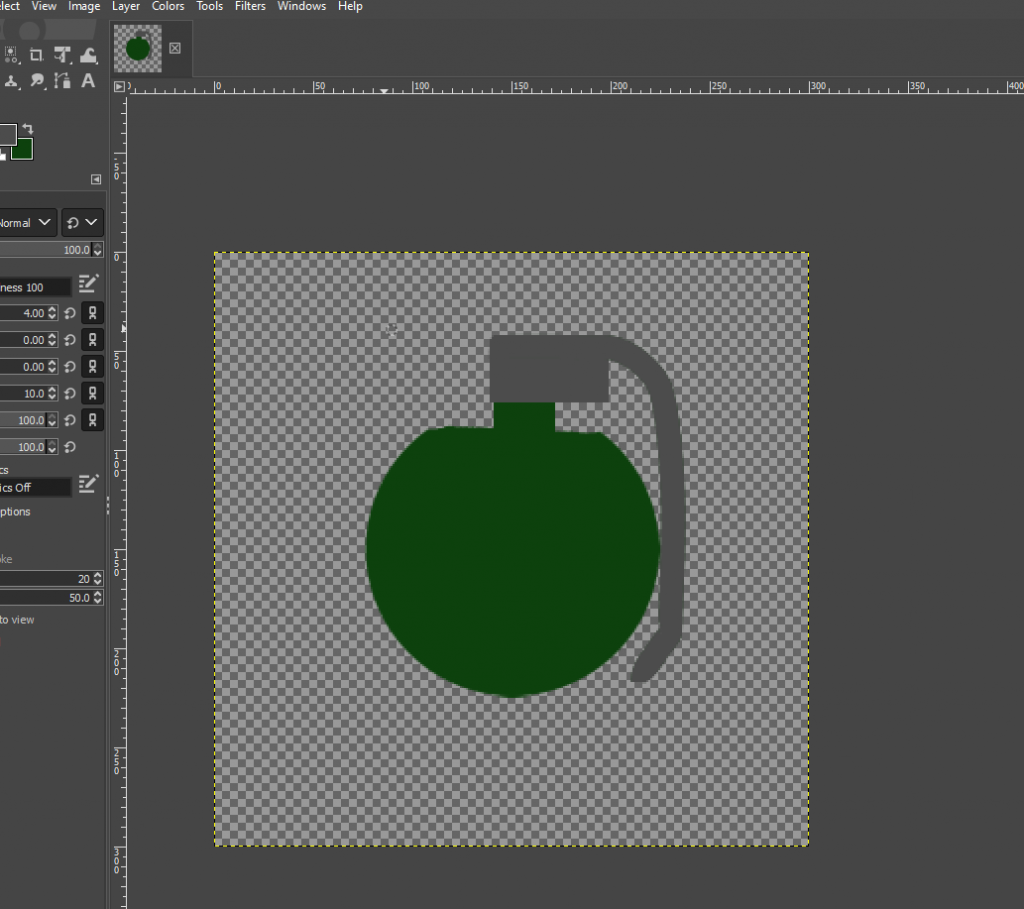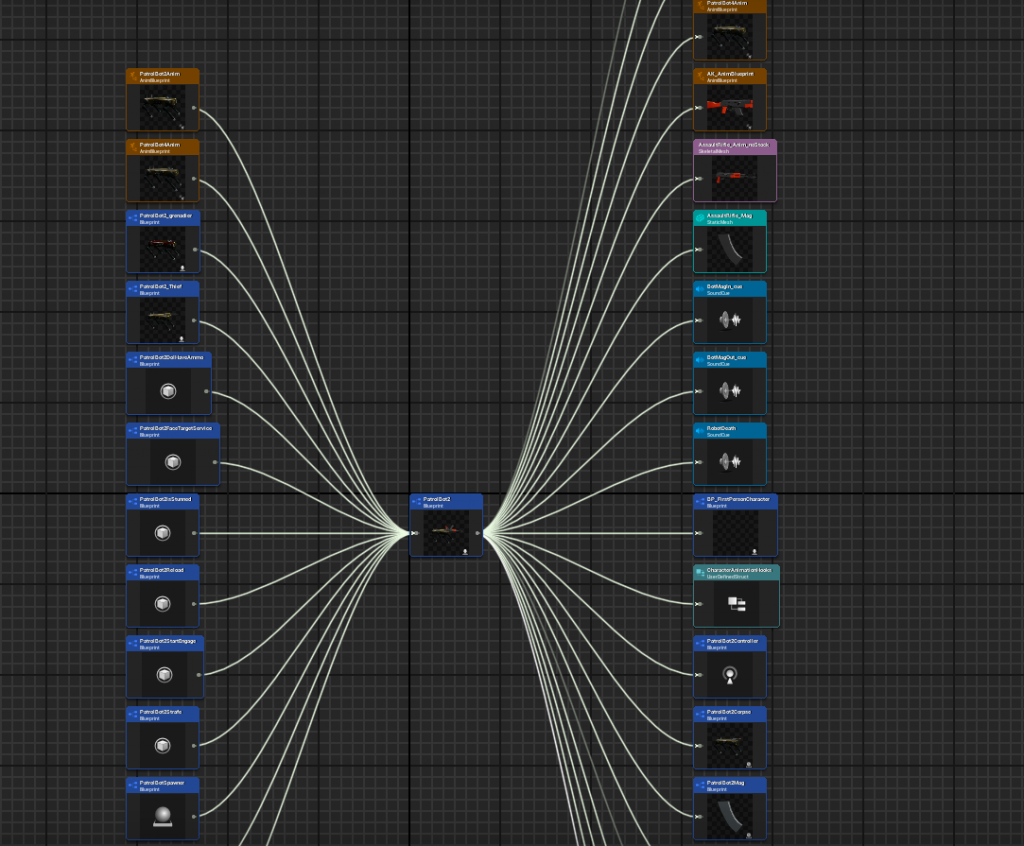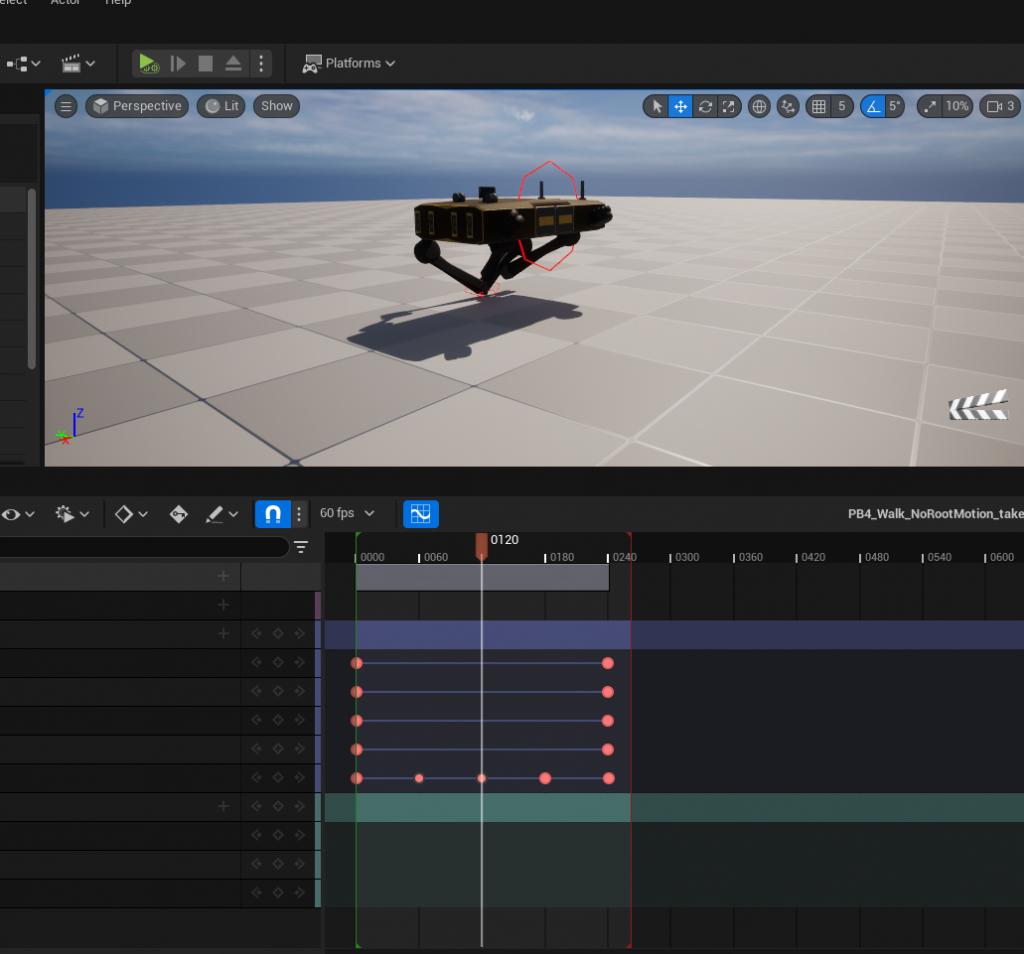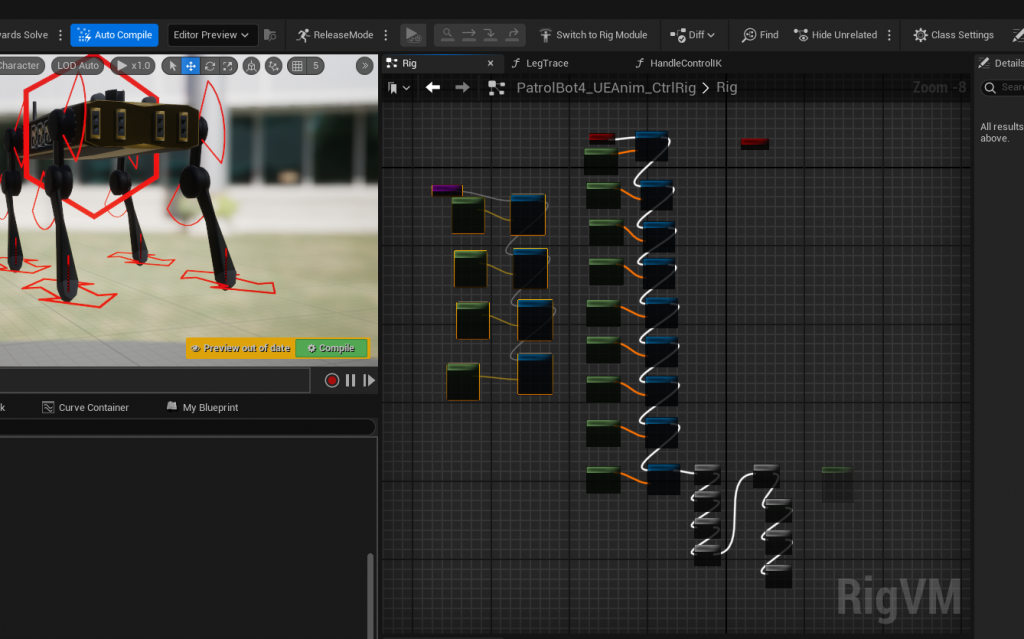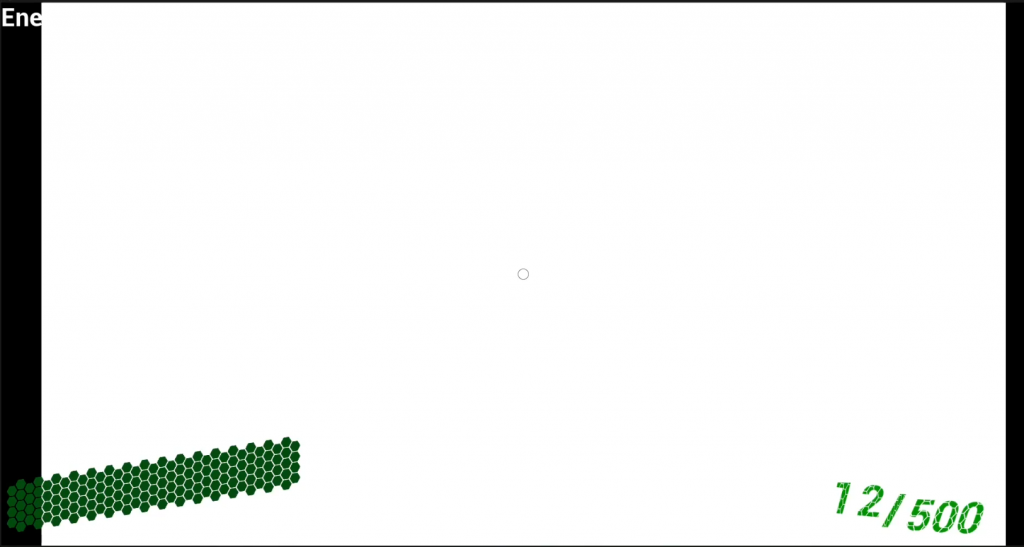Gameplay isn’t done yet but I got some paint setup on the rocket launcher and the rocket. Threw a bunch of random phrases+numbers on it, still looks pretty cartoon-y (but so does everything atm). Next step is to get the firing + reload sequence setup.
Misc.
Added a parameter to scale the grenade explosion radius so you kinda see where you’ll get hit: Its setup via user parameters and HLSL which I havent used in a while (I was fluent in the xna days, but that’s pushing 10+ years ago now) I might dig into this more just to get my […]
Throw em’
Added player grenades Pretty crude but I’m not going for quality atm, the detonations are very underwhelming, I can clean that up a bit later with a decent burn decal, a sphere effect to show radius and a bigger flash. I also really want to re-work that icon to be less…..bad? The changes to the […]
Stab-y Boy
Added in a small fast stabbing bot that will charge at your feet. I think there’s some collision issues that I gotta get through (you can see me getting pushed back during the gameplay above). But I think I got the hook ups nice enough that it’s not really a huge issue. Animation is now […]
Some Gameplay
…I’m gonna quit on the physical hit reactions thing and just make a blendspace. There’s a hackyness to the ue5 physical animations which I seem to be stuck on and I do not want to spend much more time on it. I’m still happy I ported all of the animations to UE5, that pipeline is […]
I forgot how much time Animation takes…
Uhhhgggg, I know this is a better approach because its more WYSIWYG in unreal and I’ll be doing less messing around but it’s definitely re-doing work. I have to keep believing that physical hit reactions and IK will be worth it. Walking is still the hardest IMO, everything after that should be easy as pie […]
Behold…IK
Took the bot body and made IK in unreal. Turns out the big tower of blueprint blocks I was talking about is 100% what you’re supposed to do (meaning I see it replicated in every tutorial I see). Right after making the last picture I deleted 100% of my work for the last 3 hours… […]
UE Control rigs and Custom Numpad setup
I kept looking at the last video I posted and got really annoyed at how bad the animations of the patrol bot looked. This drove me to remake the animation rig for the patrol bot (to be much, much simpler) and I started making a control rig in unreal to push the animations there (see […]
Flashy Stuff feat. Loop
Flashbangs are working. I have the patrol bots hooked up to throw them based upon an enumeration (Which I dont like, I’d rather a subclass but I shot myself in the foot earlier on). I just hijacked the reload animation and basically said “if you’re a grenade bot, reload, and instead of throwing a mag […]
I Built A TF2 Mod (Built meaning compiled)
I have tried to build a source engine mod probably 5-6 times since I started programming in late 2000s early 2010s and I’m finally ahead of the curve and I was able to get a mod built before valve did something that wasn’t in the public c++ repos that broke everything! (See https://github.com/ValveSoftware/source-sdk-2013/tree/master) This is […]


